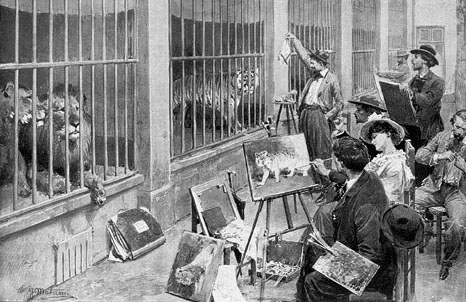 Originally, zoos weren’t meant to do anything but entertain people. Especially in a world with limited travel, seeing exotic animals could be pretty exciting. Unfortunately, by making people happy, the welfare of the animals left something to be desired. Animals were often kept and exhibited in tiny steel-barred cages with concrete flooring. Easy to clean and access? Sure. Enriching and healthy? Not in the least.
Originally, zoos weren’t meant to do anything but entertain people. Especially in a world with limited travel, seeing exotic animals could be pretty exciting. Unfortunately, by making people happy, the welfare of the animals left something to be desired. Animals were often kept and exhibited in tiny steel-barred cages with concrete flooring. Easy to clean and access? Sure. Enriching and healthy? Not in the least. Luckily, zoos have come a long way since then. Although they are still focused on entertaining people, they are equally concerned with taking care of the animals. Instead of merely showing the animals off in less-than-ideal conditions, zoos now aim to educate visitors on what they’re seeing and why. In addition, zoos are now part of conservation and research efforts all over the world. Zoos aren’t just about viewing anymore, but about taking an active role in saving species large and small.
 |
| Photo Credit: Lars Haefner, Dec. 2003 |
Even though zoos have changed their focus, they still carry a stigma for many people. It’s true that animals in zoos are going to have reduced space, but that gets balanced out with any number of advantages as well – fewer predators or competition for prey, access to veterinary care, and balanced nutrition, just to name a few. And observing these animals in captivity can tell us so much about their wild relatives. Zoos have no desire to see entire wild populations in captivity, but are interested in using the captive animals as ambassadors to make sure these species continue to thrive.
This blog will focus on efforts being made by zoos and zookeepers to help species in the wild. Humans have caused many of the problems affecting these animals, so it’s nice to be able to give back. Each entry will showcase someone involved in a zoo setting who’s making an extra effort to help out in the wild. Enjoy!
I never knew the history of zoos---very interesting!
ReplyDeleteIn the past, zoo animals were allowed to breed indiscriminately. Today, things have changed dramatically. Reputable zoos keep studbooks on their animal collections so that if breeding does occur, the bloodlines are known so that brothers aren't breeding with sisters etc. Also, AZA accredited zoos have SSP (species survival plans) programs where endangered and threatened species bloodlines are carefully monitored. A SSP coordinator for a particular species is aware of all the bloodlines of that species in AZA zoos around the country. The coordinator can then recommend certain individuals who may be under represented in the bloodline for breeding even if it means moving animals between zoos. Zoos have come a long way in maintaining the welfare of their collections and helping in the recovery of endangered species.
ReplyDelete